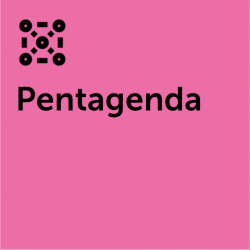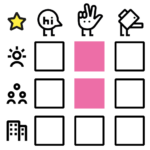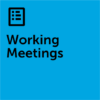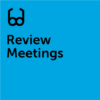Step-by-step Instructions for using the pentagenda in a meeting
All participants of a meeting are equipped with post-it notes. Alternatively, you can use remote whiteboard applications such as mural, miro or MS whiteboard.
Now you work clockwise around the outer parts of the framework. Ideally you identify a facilitator first, who is in charge of moderating the session. All results should be visualized.
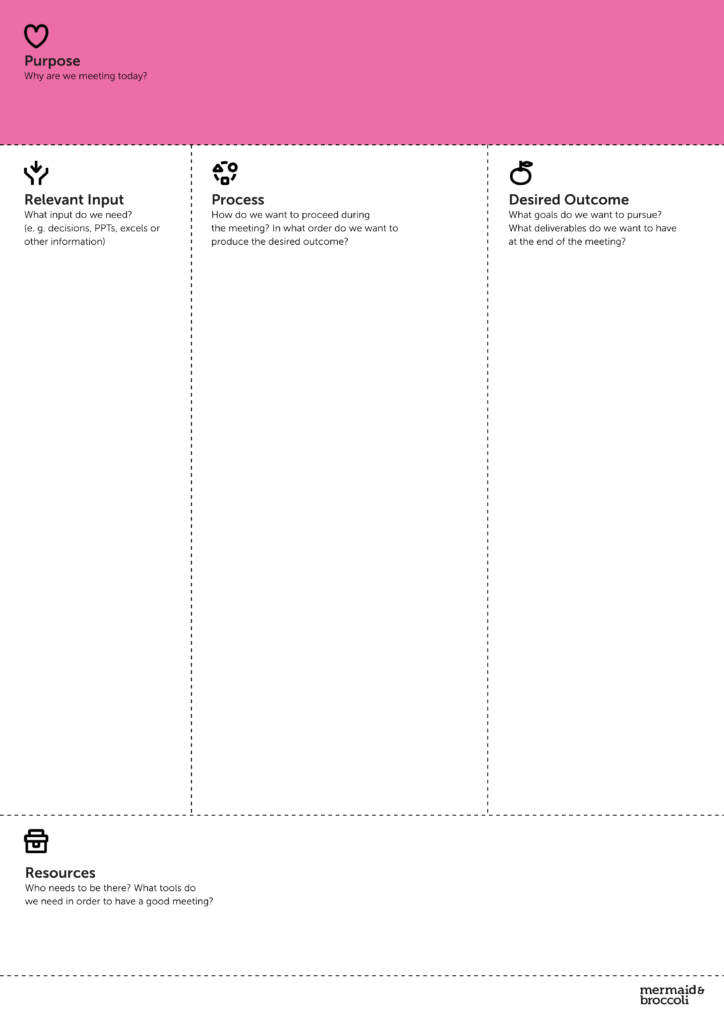
- You start with the purpose of the meeting: Here we are looking for the answer to the question of „Why are we even meeting today?“ This point is often neglected in meetings, but it is the most crucial one. All participants should have a common understanding what the purpose of a meeting is.
- Now, we want to list all the desired outcomes of this meeting. All participants should state their expectations. The question on this part of the framework is: „What do we want to achieve in this meeting and what do we want to take home afterwards?“
- Resources are next on the framework. The participants should clarify which resources are at their availability in order to fulfill the common purpose and reach the desired outcome. The participants will clarify if they have as much time as provisioned, if the room is reserved and if the necessary technology (e.g. laptops, projectors) or material (e.g. sticky notes, markers) is available. We are looking for an answer to the question of „What do we need, in order to conduct this meeting successfully?“
- The topic of „relevant input“ looks at the input you will need to fulfill the purpose and the desired outcomes. Do we have all necessary information in order to work effectively? Do we need any specific input for it from the participants or other people?
- The middle of the framework is reserved for the process of the meeting. This basically describes what is commonly referred to as an agenda – the step by step process of how to get to the desired outcome. Attention! This part of the framework is filled step by step. When properly used the process should not be completely fixed upfront. The facilitator of the meeting can propose something, but the team should decide what to work on. After finishing one topic the rest of the time should be re-prioritized in order to decide what to do next.
Using the pentagenda for preparing a delegation
You can also use the pentagenda for preparing a delegation. Do this individidually before delegating a task or co-creatively with your colleague to whom you would like to delegate the task to.
The questions underneath each topic change slightly. They are the following:
Purpose
- Why is this task relevant?
- Why is it important that we do it?
- Why do I think you can do it?
Desired Outcome
- What goals do I want you to pursue?
- What deliverables do I need from you?
Resources
- How much time do you have?
- Who else could be involved?
- What tools can you use to produce the desired outcome?
- What budget will you have?
Relevant Input
- What other input do you need? (e. g. decisions, PPTs, excels or other information)
Process
Since the process is up to the person you delegate the task to, you should not propose any process of your own, but ask open questions such as:
- How do you want to fulfill this task?
- In what order do you want to produce the desired outcome?
We have prepared an second slightly adapted template with slightly different questions that relate to a delegation as opposed to a meeting preparation. You can find it in the download section.
Source
The pentagenda is inspired by Groupmind GmbH, Köln.
RELATED METHODS
TimeboxingWork meeting or Collaboration session
Tactical or Operational Meeting
Review Meeting
DOWNLOADS
Template Pentagenda (PDF for printing, Deutsch))Template Pentagenda (PNG for online collaboration boards, Deutsch)
Template Pentagenda (PNG for online collaboration boards, English)
Template Pentagenda (PDF for printing, English)
Template Delegation Pentagenda (PDF for printing, English)
Template Delegation Pentagenda (PNG for an online collaboration board, English)


